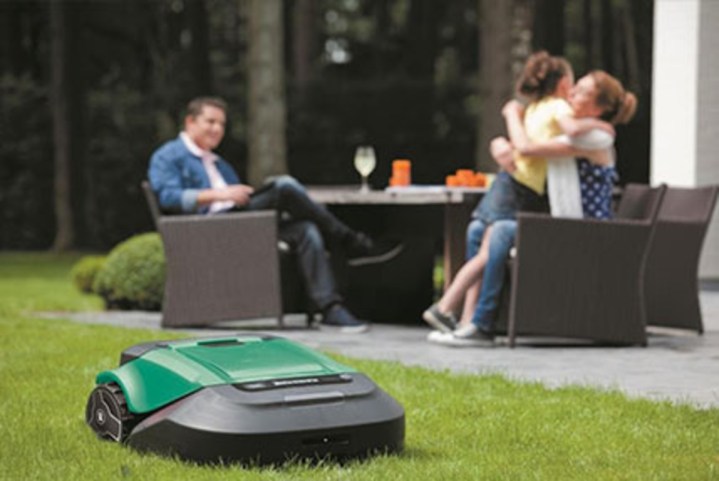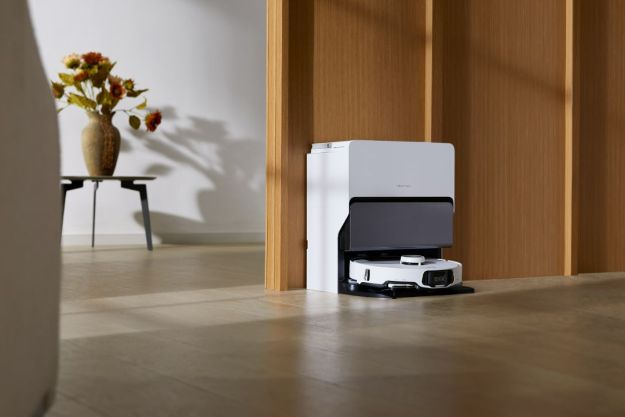
Anyone looking to cut down on time spent outside pushing a lawn mower has probably stumbled upon the burgeoning world of robotic lawn mowers. These unique gadgets are designed to keep your grass trimmed without any manual input, freeing you up to enjoy the summer months. However, anyone new to the technology will likely have some serious questions about their performance and reliability. More importantly, families with kids or pets are probably worried about the safety of robotic lawn mowers.
For example, are robotic lawn mowers safe to use around kids and pets that might be playing in the yard? Or do you need to keep them inside while the robot is working its magic? Here’s a look at whether robotic lawn mowers are safe for pets and kids to help you decide if one is right for your home.
How do robotic lawn mowers work?

Before discussing the overall safety of robotic lawn mowers, it helps to understand how they work. Each model you’ll find available today works in slightly different ways, but the main blueprint is largely the same. After unboxing your robot, the first thing you’ll do is set a perimeter for the gadget — ensuring it doesn’t roam into the neighbor’s yard or into the street. This is done via GPS navigation or through buried wires placed around the edges of your property.
Once the robot knows where it’s expected to mow, you can program in parameters for each trimming session, including grass height. Your robot will then motor around the specified area, cutting grass to the selected specifications. Many have enough horsepower to climb hills or trudge through thick grass, and their blades will automatically turn off when someone picks them up.
After completing its mowing tasks, the robot will return to its dock to charge up for the next job.
Are robotic lawn mowers safe for kids?

Most robotic lawn mowers are perfectly safe to use around kids. Many of them employ advanced navigation methods to help avoid obstacles, and because their blades stop spinning when picked up, they don’t pose much risk to small children. Some might also employ alarms and other sounds to alert nearby people in their path — ensuring they move away before getting too close.
UL Solutions — an independent safety company — offers services to robotic lawn mower manufacturers to help them craft safer products. The organization can test physical safety elements, GPS navigation, and even the cybersecurity of robotic lawn mowers. If safety is a concern for your family, be sure to look for the UL label on prospective products, which indicates that they’ve passed these rigorous tests.
Are robotic lawn mowers safe for pets?

Robotic lawn mowers are also safe for pets. Small paws are protected from the spinning blade by a large chassis that covers the entire blade, meaning there’s really no way for a dog to get hurt if they’re outside at the same time as a lawn mower. The best robotic lawn mowers will even stop their blades if an obstacle (like a dog) is detected, ensuring they stay safe. Of course, it never hurts to keep an eye on a dog that’s outside at the same time as a robotic lawn mower, as accidents can still happen since neither robot lawn mowers nor traditional lawn mowers are entirely foolproof.
And while it’s a good idea to clean up after your pet before running the robot, most can handle dog “business” without any issue. In most cases, the robot will simply run over the pile and flatten it. If it does happen to catch a blade, the large exterior chassis will prevent it from being flung across your yard.
Other things to consider
While robotic lawn mowers are largely safe for kids and pets, there are still a few other factors to consider. For one, older devices are bound to start failing, which could result in faulty safety mechanisms and lead to accidents. If you’ve noticed any issues with your robot, consider upgrading to a newer (and safer) model.
Many robot lawn mowers are also much quieter than their traditional counterparts. This means they can more easily sneak up on pets or children in a noisy yard. That means it’s a good idea to keep an eye on them to ensure they’re a safe distance from the mower. But even if they do get too close to the robot, its blades should automatically deactivate.
Keeping up with regular maintenance is important too, as it can help to prevent components from coming loose, blades from rusting, or GPS navigation from acting up. You should also check on any wires used for navigation, as they could move over time.
If you have gravel walkways or paths in the yard, these may pose safety hazards to children and pets. Most robots aren’t equipped to handle these surfaces, and if their blade catches a rock it could cause damage or possibly ricochet off the frame and turn into a projectile. Of course, this is also a problem with traditional lawn mowers — so it’s not unique to robotic lawn mowers — but it’s still important to consider when setting up your perimeters.
Editors' Recommendations
- Are robotic pool cleaners worth it?
- Best lawn mower deals: Cordless, gas, electric and robotic
- Dreame X40 Ultra vs. Roborock S8 MaxV Ultra: Which is the best premium robot vacuum?
- Best vacuum deals: Cordless to corded, Dyson to Bissell
- Ecovacs Deebot X2 Combo vs. Dreame X40 Ultra: Which robot vacuum is best for your smart home?



